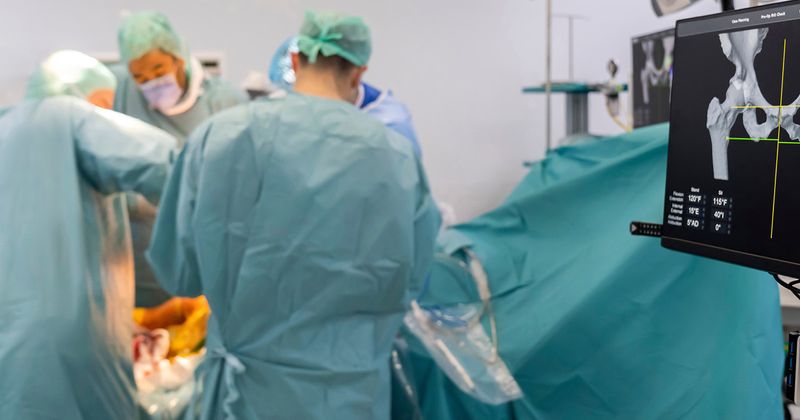Computer-assisted fluoroscopy-based navigation reduced readmissions after THA
Key takeaways:
- THA with computer-assisted fluoroscopy-based hip navigation resulted in fewer readmissions compared with manual THA.
- Total hospital costs were similar for fluoroscopy-based THA vs. manual THA.
Compared with manual total hip arthroplasty, THA with computer-assisted fluoroscopy-based hip navigation resulted in fewer readmissions, higher rates of discharge to home and similar costs.
Using data from the Premier healthcare database, William G. Hamilton, MD, and colleagues retrospectively analyzed outcomes from 4,080 computer-assisted fluoroscopy-based hip navigation THA procedures and 429,533 manual THA procedures from Jan. 1, 2016, to Sept. 31, 2021. Outcome measures including readmission, OR time, length of stay (LOS), discharge status and hospital costs were analyzed at 90 days and 1 year after surgery.

The navigation cohort had “significantly lower” all-cause and hip-related readmissions at 90 days and 1 year compared with the manual cohort. Hamilton and colleagues noted OR times were longer in the navigation cohort (134.65 minutes) compared with manual cohort (132.04 minutes); however, patients in the navigation cohort had shorter LOS (1.51 days) compared with patients in the manual cohort (1.76 days). Additionally, patients in the navigation cohort were more likely to be discharged home (93.73%) compared with the manual cohort (90.11%). Total hospital costs were $17,124.53 for navigation group and $17,159.24 for the manual group.
“Enhancing intraoperative technique in a manner that improves component positioning has been proposed as a strategy to improve THA outcomes and prevent revision,” Hamilton and colleagues wrote in the study. “Although the use of computer-assisted fluoroscopy-based navigation may require the purchase or leasing of equipment thus increasing initial cost, this cost may be offset by improved patient-centered outcomes and reduced postoperative readmission leading to overall cost-neutral procedures,” they concluded.
